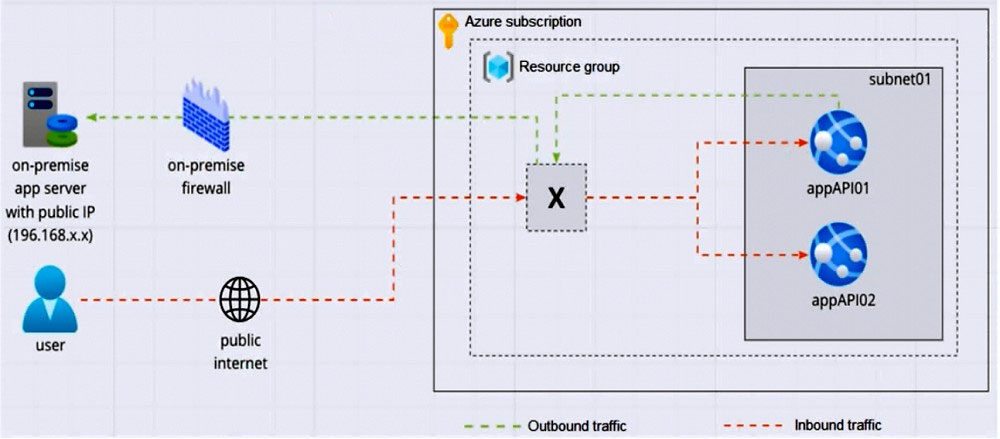

Your company is designing an application architecture for Azure App Service Environment (ASE) web apps as shown in the exhibit. (Click the Exhibit tab.)
Communication between the on-premises network and Azure uses an ExpressRoute connection.
You need to recommend a solution to ensure that the web apps can communicate with the on-premises application server. The solution must minimize the number of public IP addresses that are allowed to access the on-premises network.
What should you include in the recommendation?
JaySapkota
Highly Voted 2 years, 8 months agoTJ001
2 years, 4 months agoc3fb529
5 months agoJasper666
Highly Voted 2 years, 8 months agoariania
Most Recent 9 months agoMithu94
1 year agoc3fb529
5 months agoJonny_Cage
1 year, 3 months agoJonny_Cage
1 year, 3 months agoJonny_Cage
1 year, 3 months agocalotta1
1 year, 8 months agoArio
1 year, 10 months agozellck
2 years agoGurulee
2 years, 2 months agoAjdlfasudfo0
2 years, 2 months agobuguinha
2 years, 3 months agoexamdog
2 years, 3 months agoHullstar
2 years, 4 months agoHullstar
2 years, 4 months agopurek77
2 years, 4 months agoTJ001
2 years, 4 months agoTJ001
2 years, 4 months agoCertShooter
2 years, 5 months ago